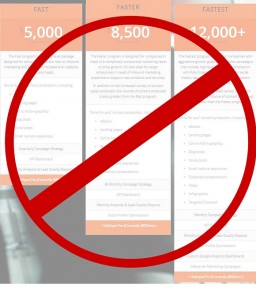Most organizations with a large number of products and subsequent revenue streams need to effectively categorize and prioritize products based upon demand, profitability and other criteria. These categorizations can benefit not only the supply chain, but also sales and marketing departments.
ABC analysis is a familiar inventory management tool that helps businesses determine a process based on the market value of items in its inventory. Supply chain managers assign items with the highest value the letter A and continue to the letter C or even D until all inventory has an appropriate letter assigned to it. For many manufacturers, the value of 20 percent of the company’s inventory makes up 80 percent of its revenue. One drawback to this system is that merchandise with similar value but vastly different demand patterns end up in the same classification. That doesn’t always give supply chain managers the most accurate information for forecasting purposes.
As an example of the above, assume that a manufacturer has an item valued at $ 50,000 that sells only once per quarter. The company also stocks a $ 1,000 item that sells 50 times per quarter. Although the dollar value in both scenarios is identical at $ 200,000, ABC analysis does not take that into account. Supply chain managers and forecasters can make better use of these figures by applying the XYZ analysis.
Adding a New Dimension to the Time-Honored ABC Analysis
XYZ takes ABC analysis a step further by accounting for the frequency of demand. Businesses that stock spare parts and low-volume products can especially benefit from this newer type of inventory tool. As any business owner whose company has irregular sales patterns already knows, forecasting future sales can be extremely challenging. One way to address that is to assign the letters X, Y, and Z in the following capacities:
- X: Also called runners, these products have shown consistent demand in at least 10 of the last 12 months.
- Y: These products are repeaters. There has been a demand for them in four to nine of the last 12 months.
- Z: This is the stranger category. Z products have been in demand for only one to three of the last 12 months.
Combining the Two Types of Inventory Analysis
It isn’t necessary to use one of these systems at the exclusion of the other. When forecasting inventory and demand, supply chain managers should list A, B, and C across the top of the column and X, Y, and Z down the side. The category AX, for example, would represent the largest anticipated demand in both revenue and actual products sold. Planning would include automatic replenishment of these items as well as ensuring that the company never runs out of inventory.
Benefit to Sales and Marketing Groups
While the supply chain team forecasts demand and must ensure that it has enough inventory on hand to meet it, those in sales and marketing can also benefit from XYZ analysis. All three areas must work in close cooperation with one another to determine patterns of customer consumption and the monetary value of different classifications of products. To carry out XYZ analysis, a member of the forecasting team needs to be in charge of collecting sales and value data. Once the sales and marketing teams have this information, they can focus their advertising and sales efforts on the products that have already proven to bring in the most revenue.
(33)
Report Post






